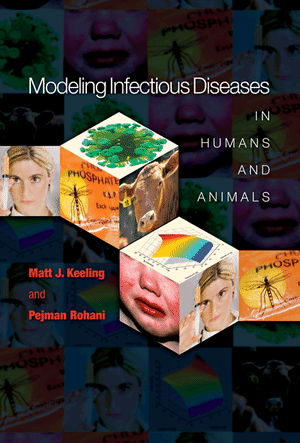|
An alternative mechanism by which
seasonal effects can enter the dynamics is through forcing the birth
rate. In particular, the vast majority of temporate species has
distinct breeding seasons, as such the birth-rate will be far higher at
certain times of the year. For simplicity we model this season effect
using a sinusoidal function. The basic equations are as follows:
Parameters
| α0 |
is
the mean birth
rate |
| α1 |
is
the amplitude of sinuoidal forcing for the birth rate
|
ω
|
is
the frequency of the oscillations. We set ω=2π/365, such that
oscillations are annual.
|
| μ |
is
the per capita death
rate, and set equal to the average birth rate α0 |
| γ |
is
called the removal
or recovery rate, though often we are more interested in its reciprocal
(1/γ) which determines the average infectious period. |
| S(0) |
is
the initial
proportion of the population that are susceptible. |
| I(0) |
is
the initial
proportion of the population that are infectious. |
All rates are
specified
in days.
The programs can return either standard time-series, or bifurcation
plots. Bifurcation plots are achieved by setting α1 to be a vector in the
Matlab code, or by setting Num_Bif_Steps in the parameter file for the
C and Fortran code.
Requirements.
All parameters must be positive, α1
≤ 1, and S(0)+I(0) ≤ 1
Files
C++ Program, Python Program, Fortran Program, Parameters, MATLAB Code.
|


